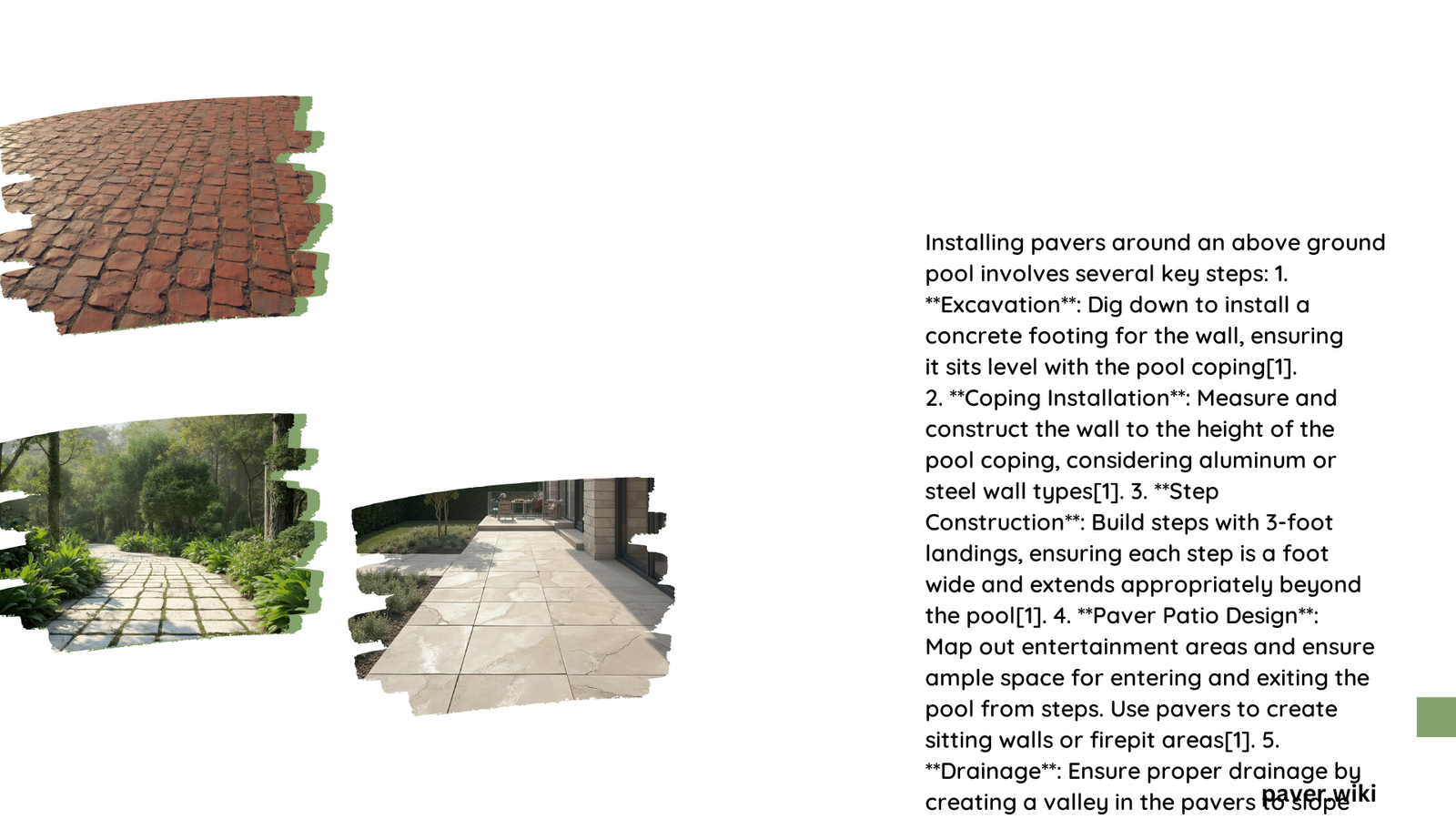Installing pavers around an above ground pool enhances the aesthetic appeal and functionality of your pool area. This process involves careful planning, proper base preparation, and precise paver placement. By following the right techniques, you can create a durable and attractive patio surface that complements your pool and provides a comfortable lounging area for family and guests.
What Are the Key Steps for Installing Pavers Around an Above Ground Pool?
The installation of pavers around an above ground pool involves several crucial steps:
- Site preparation and excavation
- Base material installation and compaction
- Sand layer application and leveling
- Paver placement and cutting
- Edge restraint installation
- Joint sand application and compaction
Let’s dive deeper into each of these steps to ensure a successful paver installation.
How Do You Prepare the Site for Paver Installation?
Proper site preparation is crucial for a long-lasting paver installation. Follow these steps:
- Mark the patio area using stakes and string.
- Excavate the marked area to a depth of 6-8 inches, depending on your paver thickness.
- Ensure a slight slope away from the pool for proper drainage (about 1 inch per 8 feet).
- Compact the soil using a plate compactor.
What Base Material Should You Use for Pavers Around a Pool?
The base material is critical for the stability of your paver installation. Here’s what you need to know:
- Use a 4-inch layer of crushed stone or gravel as the base material.
- Spread the material evenly and compact it thoroughly using a plate compactor.
- Lightly wet the base to aid in compaction.
How Do You Apply and Level the Sand Layer?
The sand layer provides a smooth surface for paver placement. Follow these steps:
- Spread a 1-inch layer of coarse sand over the compacted base.
- Use screed rails and a screed board to level the sand.
- Avoid walking on the screeded sand to maintain its level surface.
What’s the Best Method for Laying Pavers Around an Above Ground Pool?
When laying pavers, follow these best practices:
- Start from a corner and work your way out.
- Use a string line to ensure straight rows.
- Cut pavers as needed using a masonry saw.
- Leave a small gap (about 1/8 inch) between pavers for sand.
How Do You Secure the Edges of the Paver Installation?
Edge restraints are crucial for preventing paver shifting. Here’s how to install them:
- Install plastic or metal edge restraints along the perimeter.
- Secure the restraints with 10-inch landscape spikes.
- Backfill the edges with soil to hide the restraints.
What’s the Final Step in Paver Installation Around a Pool?
The final step is applying joint sand:
- Spread polymeric sand over the paver surface.
- Sweep the sand into the joints between pavers.
- Use a plate compactor to vibrate the sand into the joints.
- Mist the surface with water to activate the polymeric sand.
What Are the Best Types of Pavers for Pool Areas?

When choosing pavers for your pool area, consider these options:
| Paver Type | Pros | Cons | Average Cost per sq. ft. |
|---|---|---|---|
| Concrete | Durable, various colors | Can fade over time | $3 – $10 |
| Brick | Classic look, long-lasting | Limited color options | $5 – $15 |
| Natural Stone | Unique appearance, high-end look | Expensive, can be slippery | $10 – $30 |
How Do You Ensure Proper Drainage Around the Pool?
Proper drainage is essential for preventing water accumulation. Consider these techniques:
- Slope the paver surface away from the pool (1 inch per 8 feet).
- Install a French drain system for areas prone to water accumulation.
- Use permeable pavers in high-water areas.
What Are Common Challenges in Installing Pavers Around Above Ground Pools?
Installing pavers around above ground pools can present unique challenges:
- Accessibility: Ensure ample space for easy pool access.
- Leveling: Use a laser level for precise grading.
- Stability: Place patio blocks under pool feet for added support.
- Moisture: Choose pavers resistant to chlorine and moisture.
By addressing these challenges proactively, you can create a beautiful and functional paver patio around your above ground pool.
